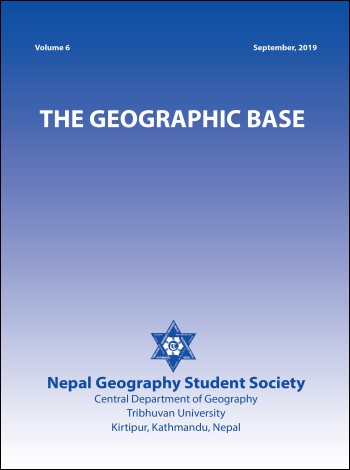Analysis of Earthen Road Construction and Land Degradation in the Tankhuwakhola Watershed of Dhankuta District
DOI:
https://doi.org/10.3126/tgb.v7i0.34281Keywords:
Environment, earthen road, land degradation, watershed managementAbstract
Earthen road construction has resulted land degradation in the Tankhuwakhola watershed of Dhankuta district, eastern hills of Nepal. The community living near the highway has dramatically changed in their way of living with the adoption of commercial crops. As a result, the people who lived far from the access of roads have interested in the expansion of agricultural link roads to their community. The local government had prepared a District Transport Master Plan (DTMP) and identified 25 rural earthen road schemes in the Tankhuwakhola watershed. The local people have also given high priority to road construction for increasing access to markets, education, health services and other facilities. The analysis of both spatial and non-spatial data reveals that the watershed area losses 1.8 million cubic meter soils due to the cause of earthen road construction. As a result, the area is suffering from the problem of the landslide, soil erosion that ultimately result of land degradation. This paper concludes that the acceleration of land degradation has exerted to the sustainability of population-resource relation. The watershed area has been producing more profitable commercial crops for exporting outside from the hills since the construction of the Koshi highway. The watershed needs an integrated watershed management program to address human-induced vulnerability and sustainability of watershed resources.
Downloads
Downloads
Published
How to Cite
Issue
Section
License
© Nepal Geography Student Society




